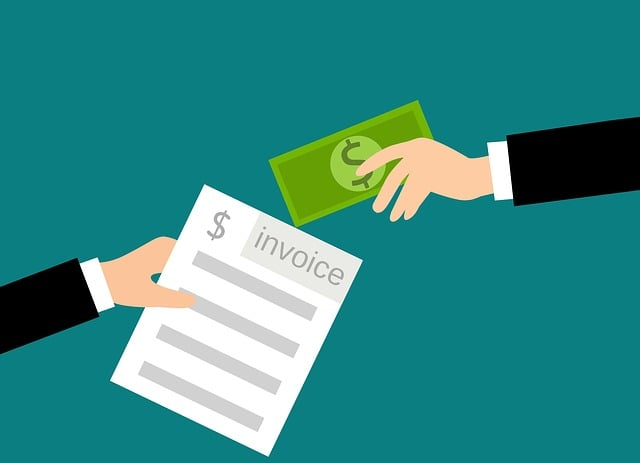What is Invoice Financing?
Invoice financing is often used as an umbrella term to discuss several forms of asset-based financing utilizing a company’s invoices or accounts receivable. Invoice financing can refer to an invoice-based cash advance, receivables-based business line of credit, and invoice factoring.
Specifically, invoice financing, also called accounts receivable financing, refers to an invoice-based cash advance. This form of near-term financing lets a business quickly access the cash flow tied up in unpaid invoices to solve working capital challenges.
How Does Invoice Financing work?
With accounts receivable financing, you receive a cash advance using your invoices as collateral. The amount you receive is based on the total value of your invoices.
Most invoice financing companies advance a percentage of the invoice value. Then when you collect the payment from your customers, you repay the advance amount plus the lender’s fees and retain whatever is left.
The invoice financing cost usually includes a processing fee and the factoring fee, which accumulates each week until your customers pay the invoice. The sooner customers pay, the less you’ll pay in fees; the longer they take to pay, the more you’ll pay in fees.
Accounts Receivable Financing Example
The ABC Company has $50,000 in outstanding invoices but is facing an urgent cash flow shortage. The company works with an invoice financing lender with the following rates:
- Advance rate: 90%
- Processing fee: 3%
- Factor rate: 1%
The lender advances 90% of $50,000, which means ABC Company receives $45,000 upfront to solve cash flow issues. The remaining $5,000 goes into a reserve account.
The lender charges a processing fee of 3% for $1,500. Your customer pays back the invoice in three weeks. At 1% per week, the total factor fee comes out to 3% for another $1,500. You get the remaining $2,000.
At the end of the financing agreement, you paid $3,000 in fees to receive a three-week advance of $45,000. That’s the equivalent of a nearly 80% APR.
The cost of invoice financing does run higher than traditional business loans, but it might be worth it if your business urgently needs to convert invoices into working capital.
Also, since it’s near-term financing, you pay off the amount owed quickly. An 80% APR would be untenable in a long-term loan. In the above example, the ABC company paid 12% of its invoices to receive an immediate influx of cash.
How does my business qualify for Invoice Financing?
Getting approved for accounts receivable financing is much easier than other business financing programs. In fact, one of the main reasons businesses pursue invoice financing is that they couldn’t qualify for a less expensive alternative.
Since repayment ultimately comes from your customers paying their invoices, lenders scrutinize their credit more than yours. Your customers’ reliability is a crucial factor in invoice financing approval.
As such, most lenders only consider working with business-to-business (B2B) and business-to-government (B2G) companies. Business-to-consumer companies that use invoicing typically don’t qualify as assessing their credit is more challenging, but some lenders might consider it.
The most common industries that qualify and apply for invoice financing are:
- Agriculture & farming.
- Business consulting.
- Construction & contractors.
- Distributors.
- Healthcare & medical suppliers.
- Legal services.
- Manufacturers.
- Marketing services.
- Oilfield & gas.
- Retail.
- Staffing companies.
Minimum Qualifications
Some financial institutions don’t have minimum requirements to qualify and accept start-up businesses, but they typically have the highest rates. In general, approved companies meet the following minimum requirements:
- Credit score of 550+
- $250k in annual revenue.
- At least one year in business.
How to apply for Invoice Financing:
Each lending institution has its own application process. Here are the steps to apply for invoice financing through United Capital Source.
Step 1: Ensure customers are creditworthy.
Your ability to repay the loan depends on your customers paying their invoices. Make sure that you and the invoice financing company can trust they will pay.
Step 2: Gather your documentation.
Be prepared the provide the following when you apply:
- Driver’s license.
- Voided business check.
- Banks statements from the previous three months.
- Business tax return.
- Accounts receivable aging report, Accounts payable report, debt schedule.
Step 3: Apply.
You can apply through our one-page online application or contact us.
Step 4: Speak to a representative.
After submitting an initial application, one of our loan experts will reach out to you. The representative will discuss your business needs and help you find the right product.
Step 5: Receive approval & funds for cash flow.
The entire process takes about two weeks to complete. The funds will appear in your account 1-2 business days after approval.
Frequently Asked Questions
Here are the most common questions about invoice financing.
Do banks offer Invoice Financing?
Alternative online lenders and financial technology (fintech) companies primarily offer invoice financing. Banks don’t usually provide invoice financing and focus mainly on traditional business loans.
What’s the difference between Invoice Financing & Invoice Factoring?
Both are near-term financing solutions using your unpaid invoices and sound similar, but some key differences exist. Invoice financing is sometimes used as an umbrella term that includes invoice factoring.
Invoice factoring, sometimes called invoice discounting, is an invoice finance strategy where a business sells its invoices at a discounted rate for an immediate influx of working capital. The invoice factoring company then owns the invoice and collects the payment from your customers.
Invoice factoring is not a loan; you don’t incur any debt. Invoice financing is a loan with short-term repayment.
In invoice financing, you still own the invoices and collect the payment from your customers. You then use that payment to repay the loan amount.
Some small businesses prefer invoice factoring because they don’t go into debt and the factoring company acts as their accounts receivable department, collecting invoices from customers. Businesses that prefer invoice financing like retaining ownership of the invoices and maintaining a direct relationship with their customers.
What are my other financing options?
If neither invoice factoring nor accounts receivable financing work for your business, other loan options exist. Let’s review the loan options available for small business owners.
Small Business Loans
Here are some small business loans to consider.
SBA Loans
Backed by the Small Business Administration, SBA Loans are considered the gold standard of small business financing. SBA Loans have high borrowing amounts with low rates and extended repayment terms. The drawback is that it’s challenging to qualify for SBA Loans, and the application process takes a long time. If you need immediate funding, SBA Loans won’t work.
Equipment Financing
Equipment loans are used exclusively to acquire business equipment. The loan structure uses the financed equipment as collateral for the loan. Consider equipment financing if your business needs to replace or update equipment.
Merchant Cash Advance
A merchant cash advance shares some similarities with invoice financing, except that you repay the advance with a portion of future credit card sales. While invoice financing is suitable for B2B and B2G, merchant cash advances are also good for B2C companies.
Business Line of Credit
A business line of credit acts like a credit card. You get a set credit limit and can draw funds as needed. You then repay the amount you withdrew plus interest in weekly payments. Like invoice financing, a business line of credit can supply your company with immediate working capital. Some lenders even offer an invoice-based line of credit.
Working Capital Loan
Working capital loans refer to various short-term loans intended to help with cash flow and immediate working capital needs. Technically, invoice financing is a type of working capital loan, but there are others to consider if you don’t want to or can’t pursue invoice financing.
Revenue-Based Loan
Revenue-based financing is a financing structure where the amount you receive and your repayment terms are based on your company’s revenue. It’s like invoice financing in some ways but broader in scope. Revenue-based loans are great for seasonal companies or businesses with inconsistent revenue cycles since your repayment terms are a fixed percentage of revenue coming into the business.
Business Term Loan
Business term loans are the most traditional form of small business financing. With a term loan, you receive a large amount upfront, which you then repay plus interest in fixed monthly payments for the length of the loan term.
What are the advantages of Invoice Financing?
The primary benefit of accounts receivable financing is how quickly you receive the funds. The purpose of invoice financing is to turn static invoices into working capital to solve an immediate need, such as covering payroll, purchasing inventory, or other cash flow problems.
Most invoice financing programs run through online lenders and fintech companies, which can wire transfer funds quickly. Sometimes, you can get same-day or next-day funding on your invoice financing loan.
Invoice financing is also easier to get than other business loans. For some businesses, it might be the only way to get a loan until they can build business credit, revenue, and history.
While invoice financing is expensive, you can keep your costs down if your customers pay on time. You can even try to incentivize early payment with discounts or a more streamlined invoicing system to help reduce the weekly charges.
The invoices are the collateral for the loan, so you don’t have to put additional business assets at risk. Also, since it’s near-term financing, you only incur debt for a short period. Most invoices run on net 30, 60, 90, or 120 days.
What are the disadvantages of Invoice Financing?
The biggest drawback to financing invoices is the cost. The amount you pay will be more than a traditional bank loan.
Invoice financing is also limited to B2B and B2G companies. B2C businesses likely won’t qualify and need a different financing option.
When a business receives funding based on invoices, it becomes dependent on customers to pay on time to reduce costs. You don’t have any control over when your customers pay (or if they pay), which puts businesses in a difficult position.
The best advice we can give with invoice financing is to ensure your customers are trustworthy. You’re putting the cost of financing in their hands – ensure you’ll get paid.
Since the financing structures are complicated and dependent on when customers pay, it’s difficult to assess the full cost of invoice financing. There are ways to analyze the cost, but the unknown of when customers will pay always remains a variable.
We prepared a pros and cons list for a quick summary.
Invoice Financing Pros & Cons:
Pros:
- Quick access to working capital to solve cash flow challenges.
- Converts unpaid invoices to cash for your business.
- Easier to qualify for than traditional business loans.
- Your invoices act as collateral to secure the loan.
- Mitigate costs with early customer payments.
Cons:
- Rates and fees are higher than traditional loans.
- Dependent on customers paying their invoices.
- Difficult to find and compare costs.
- Not suitable for B2C companies.
Invoice Financing – Final Thoughts
Accounts receivable financing is best for businesses sitting on unpaid invoices that need an immediate influx of working capital. Additionally, it’s a good option for companies that don’t qualify for more traditional financing programs.
If your business is more established, has solid credit, and doesn’t need urgent funding, you can find less expensive small business loans. If your business needs immediate funding, there might still be a less expensive option.
Invoice financing is also sensible if you know your customers pay on time. It’s basically taking the asset of the money owed to your business and paying a fee to turn it into liquid cash sooner.
You can contact us to learn more about invoice financing or other small business loans. One of our loan experts would be happy to discuss your business needs and help you find the right financing solution.

















